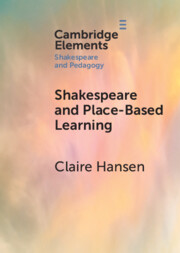Element contents
Shakespeare and Place-Based Learning
Published online by Cambridge University Press: 20 October 2023
Summary
- Type
- Element
- Information
- Online ISBN: 9781009019620Publisher: Cambridge University PressPrint publication: 07 December 2023
References
- 7
- Cited by

